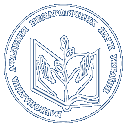- Адамюк, Н.Б. (orcid.org/0000-0002-4927-6257) (2020) Specificity of translation of non-equivalent vocabulary by sign language translators in the educational process Актуальні питання гуманітарних наук, 1 (29). pp. 138-144. ISSN 2308-4855
|
Text
2020, 4.pdf - Published Version Download (512kB) |
Abstract
This article addresses the issue of non-equivalent vocabulary in the interpretation of the term. The Ukrainian researchers who worked on this topic are listed, as well as foreign scientists whose research subject is sign language, translation issues and the training of sign language translators. It is indicated that the Ukrainian sign language as a science has been little studied, since it was recognized by the state only at the beginning of this century. It is emphasized that the direct contact of sign language translators with its native speakers exposed the existing problem of translators' receptive skills in terms of the perception and understanding of native sign language, in particular, through the non-equivalent vocabulary of sign language. It is emphasized that the linguistic expressions of the latter cannot be translated into a verbal one word, since, for the most part, there is no verbal correspondence. By the use of linguistic units of non-equivalent vocabulary, it is classified into three groups: a) the use of dactyl characters alone; b) the use of a combination with articulation, which is inherent only in sign language, and the lexical unit of sign language; c) use of one lexical unit. Each group contains examples of linguistic units displayed on the pictures and using tactile signs. The meaning of the language samples given in each group is disclosed in order to understand the importance of knowledge of Ukrainian Sign Language in terms of non-equivalent vocabulary. As a result, it will contribute to the effective enhancement of the sign language communication skills of sign language interpreters and the qualitative satisfaction of the communication needs of deaf deaf students in the educational process. The expressive coloring of the concept contained in the linguistic unit of the non-equivalent vocabulary is highlighted in the examples. In some examples, linguistic samples belong to the category of multi-valued and to the class of neologisms. Both ordinary and double photos are presented, bearing one concept. In double photographs, the starting and ending positions of the language unit are recorded. It is emphasized that tracing gesture speech does not contribute to mastering the non-equivalent vocabulary of the Ukrainian sign language.
| Item Type: | Article |
|---|---|
| Keywords: | articulation, non-equivalent vocabulary, lexical unit, educational translator, level of competence, pictures, Ukrainian sign language |
| Subjects: | Science and knowledge. Organization. Computer science. Information. Documentation. Librarianship. Institutions. Publications > 3 Social Sciences > 37 Education > 376 Education, teaching, training of special groups of persons. Special schools > 376.3 Виховання та освіта осіб із вадами зору, слуху, мови та нервовими захворюваннями. |
| Divisions: | Mykola Yarmachenko Institute of special education and psychology of National academy of educational sciences of Ukraine > Ukrainian Sign Language Department |
| Depositing User: | SignLangLab ISP |
| Date Deposited: | 11 Aug 2021 23:42 |
| Last Modified: | 11 Aug 2021 23:42 |
| URI: | https://lib.iitta.gov.ua/id/eprint/726180 |
Downloads
Downloads per month over past year
Actions (login required)
 |
View Item |




